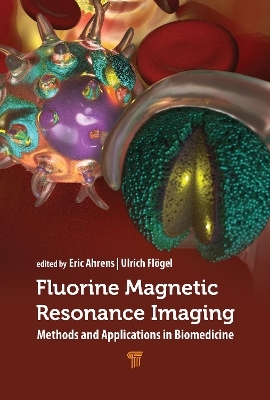
Fluorine Magnetic Resonance Imaging
Jenny Stanford Publishing (Verlag)
978-981-5129-37-3 (ISBN)
This book is an interdisciplinary compendium detailing cutting-edge science and biomedical research in the emerging field of 19F MRI and includes technical issues, such as pulse sequence considerations and limits of detection of the techniques; synthesis of novel 19F MRI tracer agents; inflammation, cancer, and stroke imaging; regenerative brain repair; theranostic nanomedicine; and clinical perspectives. The book will appeal to investigators involved in MRI physics, biomedicine, immunology, pharmacology, and probe chemistry as well as general readers.
Eric T. Ahrens is a professor of radiology at the University of California San Diego and the director of Stem Cell Molecular Imaging at the Sanford Consortium for Regenerative Medicine, California, USA. His research focuses on adapting non-invasive imaging methods to visualize specific cell populations in the body. He has pioneered MRI-based cell-tracking materials and methods that have been adopted by numerous investigators worldwide. Innovations by his laboratory include the synthesis of functionalized perfluorocarbon-based nanoemulsion probes for sensitive MRI, PET, and fluorescence detection. He led a team that developed a novel clinical perfluorocarbon 19F MRI cell-tracking agent and performed first-in-human studies to visualize the fate of cancer cell therapy grafts post-transfer. He has authored more than 100 scholarly publications in the fields of physics, chemistry, biology, and biomedicine and is an inventor on 12 patents. Ulrich Flögel is a professor for experimental cardiovascular imaging at the Department of Molecular Cardiology, Heinrich-Heine University of Düsseldorf, Germany. His research focuses on the interplay of function, energetics, metabolism, and inflammation as well as their role in the development of cardiovascular disease using innovative multinuclear MRI/MRS techniques, particularly 19F tracers. His efforts have established a broad molecular imaging platform that can track inflammatory and thrombotic processes with high specificity in parallel to metabolic and energetic alterations together with in-depth tissue microstructure characterizations.
1. Polymeric 19F MRI Agents: Designing Responsive Imaging Agents 2. Nanofluorides: Inorganic Fluoride Nanocrystals for 19F MRI 3. Multibranched Superfluorinated Molecular Probes for 19F MRI 4. Development of Perfluorocarbon-Encapsulated Silica Nanoparticle as 19F MRI Tracer Agent 5. Perfluorocarbon Theranostic Nanoemulsions: From Imaging to Treatment of Inflammatory Diseases and Pain 6. Choosing and Optimizing a Pulse Sequence for Fluorine-19 MRI 7. 19F for Quantitative Tracking of Immune Cells Involved in Cancer Progression and Therapy 8. Noninvasive In Vivo Imaging of Neutrophil Trafficking by 19F MRI 9. 19F MRI to Map the Spatio-Temporal Infiltration of Immune Cells in Stroke and Tissue-Regeneration 10. Sensitivity and 19F MRI Cell Tracking
| Erscheinungsdatum | 23.08.2024 |
|---|---|
| Zusatzinfo | 5 Tables, black and white; 58 Illustrations, color; 18 Illustrations, black and white |
| Sprache | englisch |
| Maße | 152 x 229 mm |
| Gewicht | 739 g |
| Themenwelt | Medizin / Pharmazie ► Allgemeines / Lexika |
| Medizinische Fachgebiete ► Radiologie / Bildgebende Verfahren ► Kernspintomographie (MRT) | |
| Medizinische Fachgebiete ► Radiologie / Bildgebende Verfahren ► Radiologie | |
| Naturwissenschaften ► Biologie | |
| ISBN-10 | 981-5129-37-6 / 9815129376 |
| ISBN-13 | 978-981-5129-37-3 / 9789815129373 |
| Zustand | Neuware |
| Haben Sie eine Frage zum Produkt? |
aus dem Bereich


